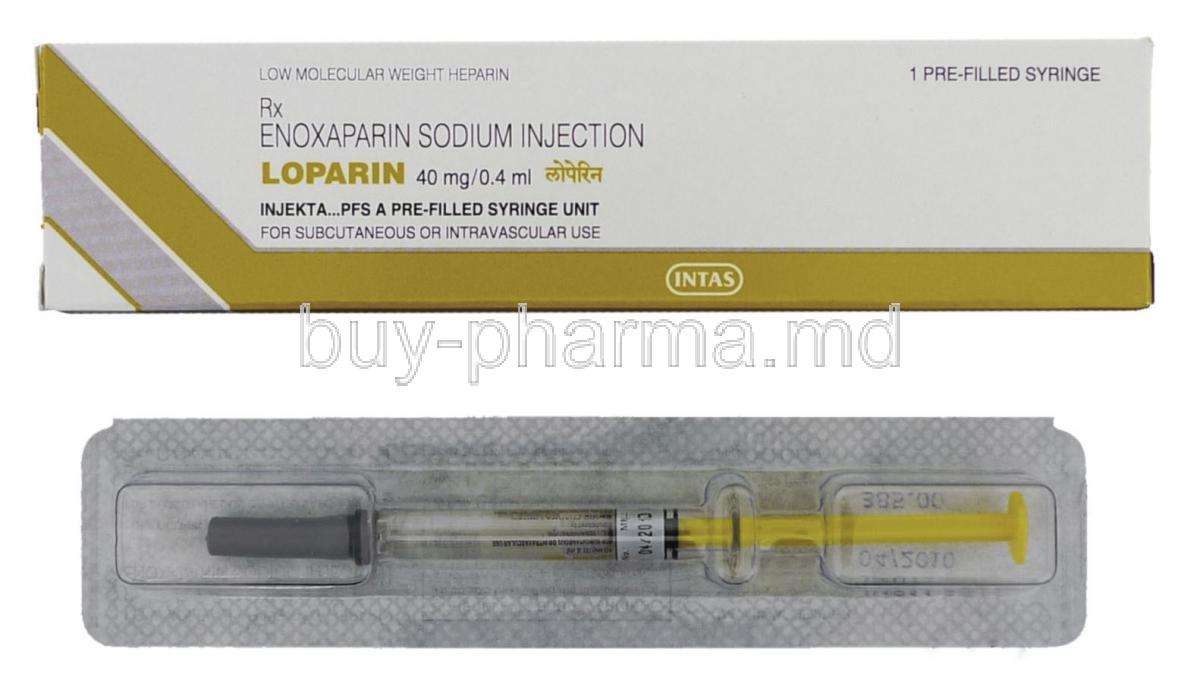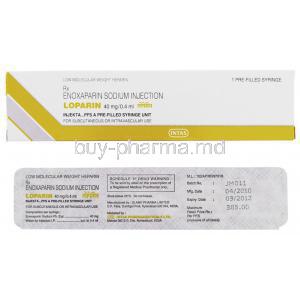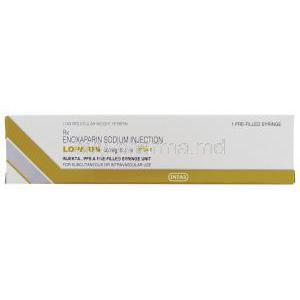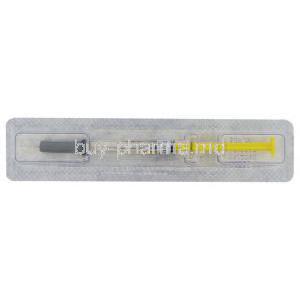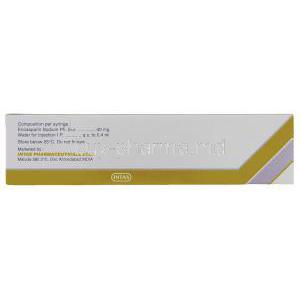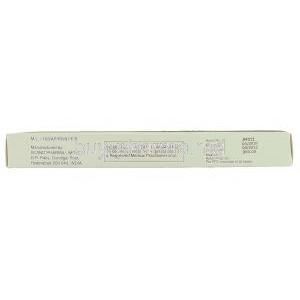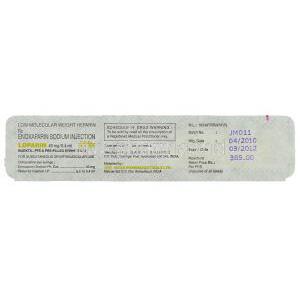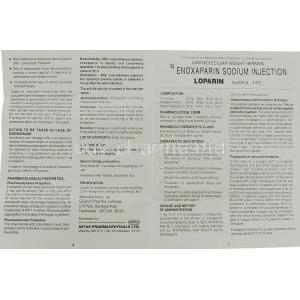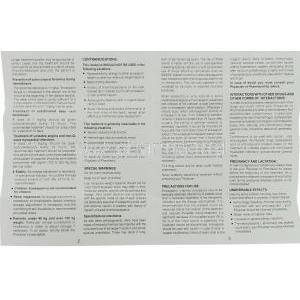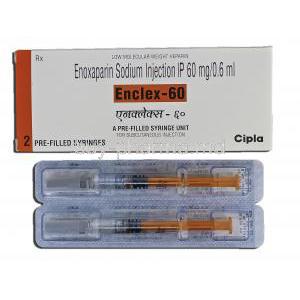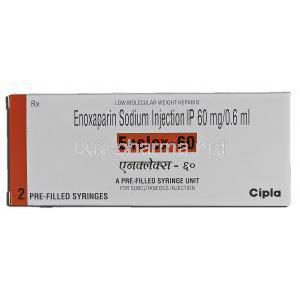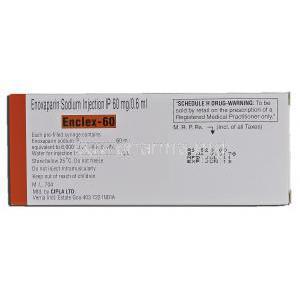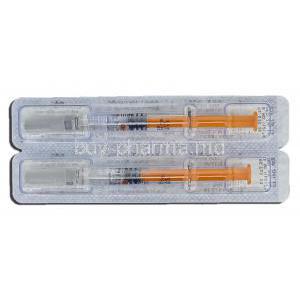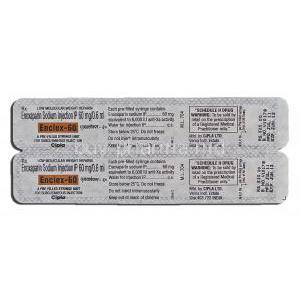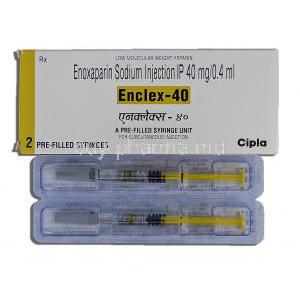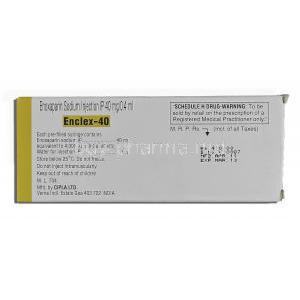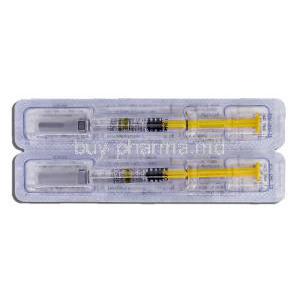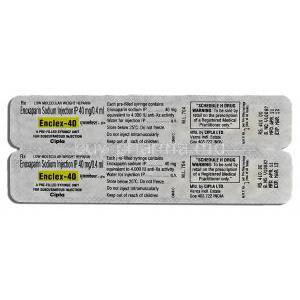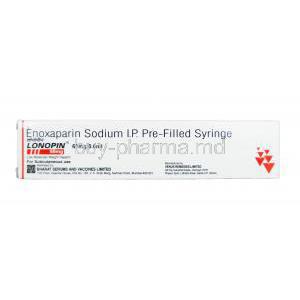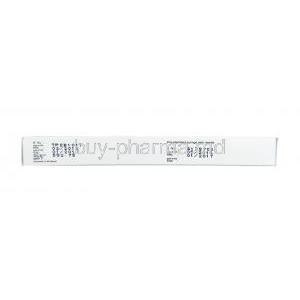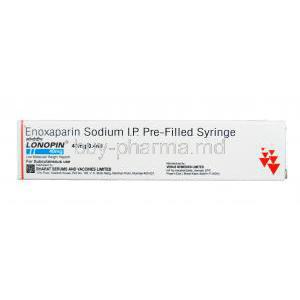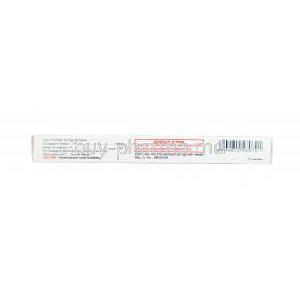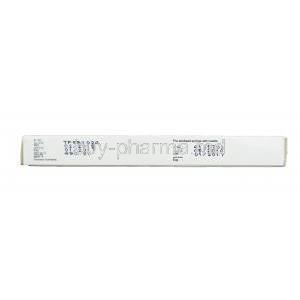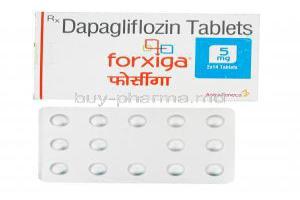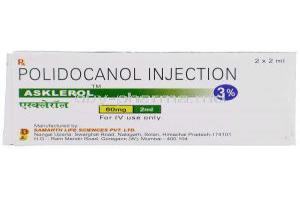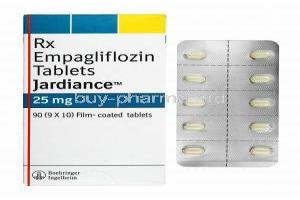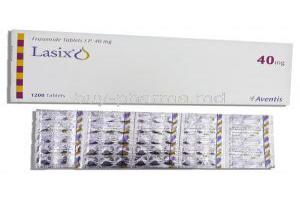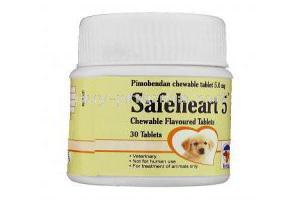Enoxaparin Sodium
- I. Introduction to Enoxaparin Sodium Injection
- II. Composition of Enoxaparin Sodium Injection
- III. How Enoxaparin Sodium Works
- IV. Enoxaparin Sodium Uses
- V. Off-label Use of Enoxaparin Sodium
- VI. Dosage and Administration of Enoxaparin Sodium Injection
- VII. Interaction of Enoxaparin Sodium with Other Medications
- VIII. Side Effects of Enoxaparin Sodium Injection
- IX. Contraindications of Enoxaparin Sodium
- X. Careful Administration of Enoxaparin Sodium
- XI. Special Precautions for Enoxaparin Sodium Usage
- XII. Enoxaparin Sodium Administration to the Elderly
- XIII. Enoxaparin Sodium in Pregnancy and Lactation
- XIV. Enoxaparin Sodium in Pediatric Use
- XV. Overdosage of Enoxaparin Sodium
- XVI. Storage and Handling Precautions for Enoxaparin Sodium
I. Introduction to Enoxaparin Sodium Injection
A. Understanding the Basics of Enoxaparin Sodium
Enoxaparin sodium is a type of medication used to prevent blood clots. It belongs to a group called low molecular weight heparins (LMWH) which have characteristics that set them apart from other anticoagulants. Enoxaparin sodium contains sulfated polysaccharide chains, such as iduronic acid and glucosamine. It is derived from heparin; It goes through alkaline depolymerization, which refines its anticoagulant properties and reduces the likelihood of side effects.

Injection
B. Importance of Enoxaparin Sodium in Medical Treatment
Enoxaparin sodium plays a role in the treatment of thromboembolic diseases. Its ability to prevent the formation of blood clots in both veins and arteries makes it an essential tool for doctors. The use of Enoxaparin sodium extends across clinical situations, including.
- Deep Vein Thrombosis (DVT)
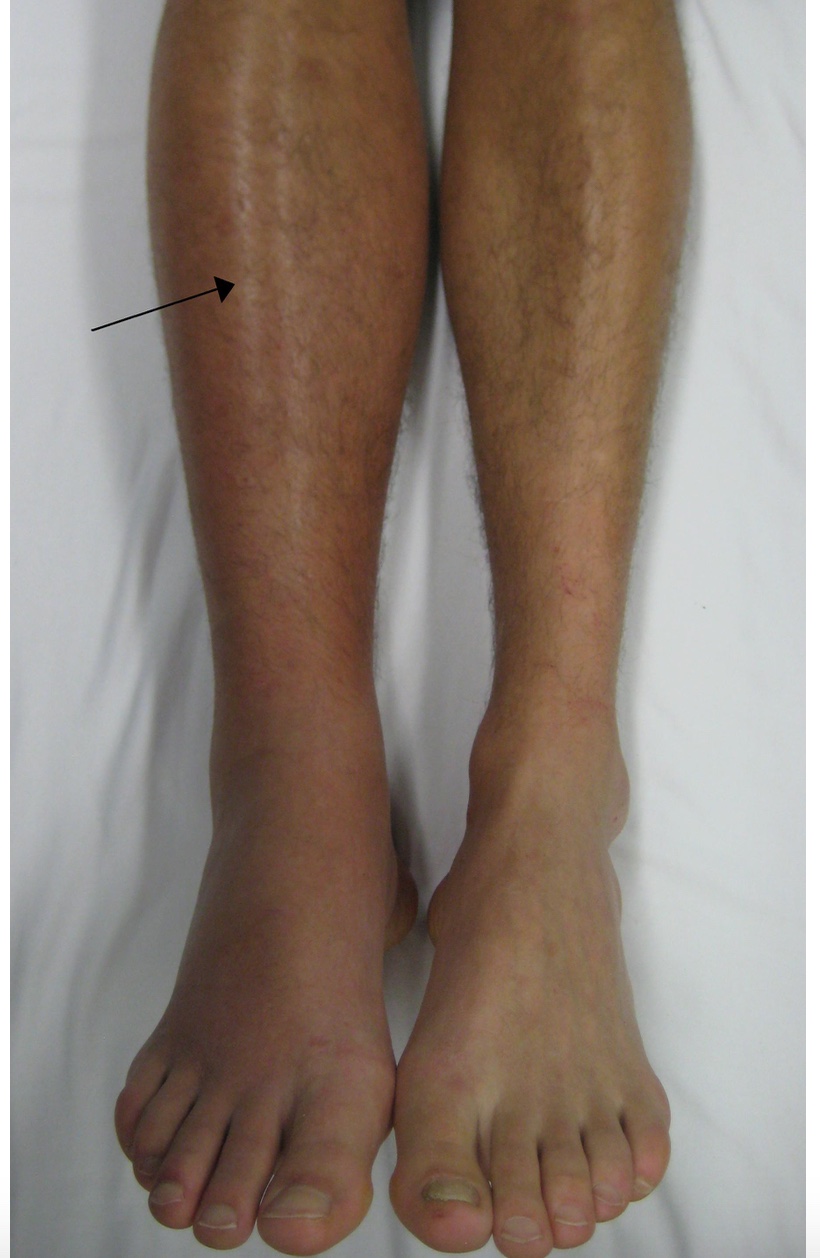
Deep Vein Thrombosis
- Pulmonary Embolism (PE)
- Acute Coronary Syndrome (ACS)
Additionally, it is also used as a measure for patients undergoing surgical procedures or those who are immobilized due, to medical conditions helping to reduce the risk of thromboembolic complications.
II. Composition of Enoxaparin Sodium Injection
A. Active Ingredient: Enoxaparin Sodium
Enoxaparin Sodium injections contain Enoxaparin Sodium, which's the main component. The dosage of this medication varies depending on the patient's condition. It is a substance that directly affects coagulation and prevents blood clot formation.(1)
B. Inactive Components
Although quiet, inactive components of Enoxaparin Sodium injections play an important role. They help maintain stability and improve the delivery of the injection. Typically these components include water for injections, and sodium chloride, which work together to preserve the stability and osmolarity of the solution.
C. Comparative Analysis with Other Anticoagulants
There are several advantages when comparing Enoxaparin Sodium to anticoagulants like unfractionated heparin (UFH) or fondaparinux. Enoxaparin Sodium provides a predictable response as an anticoagulant, reduces the risk of thrombocytopenia, and has a lower chance of causing osteoporosis with long-term use. Additionally, it allows for outpatient treatment in cases which adds to its convenience factor.
III. How Enoxaparin Sodium Works
A. The Mechanism of Action
Enoxaparin Sodium demonstrates its effects by enhancing the function of antithrombin, a naturally occurring protein in plasma that hinders the activity of clotting factors. It primarily targets Factor Xa, a component in the process of blood coagulation, thus preventing the formation of clots. Its mode of action aligns with the notion that "prevention's better than cure" as it intervenes during the initial stages to halt clot development.
B. Timeline: How Long it Takes to Work
Enoxaparin Sodium demonstrates its effects promptly, with peak anti-factor Xa levels reached around 3 to 5 hours after subcutaneous administration. As a result, patients and healthcare professionals can anticipate the therapeutic effects becoming evident within this timeframe. However, its action continues for up to 12 hours, protecting against the formation of blood clots.
IV. Enoxaparin Sodium Uses
A. Primary Uses: Deep Vein Thrombosis and Pulmonary Embolism
Enoxaparin Sodium plays a role in managing ;
- Deep Vein Thrombosis (DVT)
- Pulmonary Embolism (PE).
The formation of blood clots characterizes these conditions. In DVT, the clot usually forms in the veins of the legs or pelvis, while in PE it travels to the lungs, posing a potentially life-threatening situation.(1)
This medication acts as a blood thinner, preventing the clots from spreading and dissolving. As a result, it significantly reduces the risk of experiencing complications such as Post Thrombotic Syndrome or Chronic Thromboembolic Pulmonary Hypertension.(2)
1. National library of Medicine - Enoxaparin
2. Medline Plus - Enoxaparin Injection
B. Secondary Uses: Preventing Blood Clots in Surgery
Enoxaparin Sodium also plays a role in preventing blood clots during surgical procedures. It is commonly administered to patients undergoing orthopedic surgeries like hip replacement or knee arthroplasty as well as abdominal surgery. These surgeries increase the risk of blood clot formation due to immobility, It slows blood flow in the veins.
Additionally, it is prescribed to surgical patients who are at a high risk of developing blood clots due to prolonged periods of immobility. In some cases, Enoxaparin Sodium acts as a safeguard against clot formation and potential complications that may arise as a result.(1)
1. WebMd - Enoxaparin SODIUM Syringe - Uses, Side Effects, and More
C. Prophylactic Usage in Acute Coronary Syndrome
Enoxaparin Sodium is a medication for Acute Coronary Syndrome (ACS), which includes conditions like unstable angina and myocardial infarction. Its main purpose is to act as a measure against the formation of blood clots in the coronary arteries, which could potentially lead to a heart attack.
The administration of Enoxaparin Sodium in ACS is typically part of a treatment plan that includes other medications like antiplatelet agents and statins, all working together to prevent cardiovascular events and improve patient outcomes.
V. Off-label Use of Enoxaparin Sodium
A. Unconventional Applications in Medicine
Enoxaparin Sodium, although primarily indicated for purposes, has found applications beyond those boundaries in the field of medicine. It is being used off-label due to its anticoagulant properties and the convenience of outpatient administration, making it a versatile treatment option. Some examples of off-label use include;
- Addressing pregnancy loss caused by antiphospholipid syndrome
- Preventing clotting in extracorporeal circuits like dialysis
- Assisting in cancer therapy by reducing the risk of thromboembolic events.
B. Efficacy and Risks in Off-label Use
The use of Enoxaparin Sodium for purposes outside its approved label is supported by a mixture of evidence often obtained from small scale studies case reports or expert opinion. These alternative uses are usually explored when standard treatments fail or are not recommended.
However it is important to consider such unconventional applications. While the therapeutic effectiveness shows promise it may not be fully established due to available data. Additionally the associated risks may differ from those of its use requiring a thorough analysis of the potential benefits and risks.
Some common risks to consider include
- Bleeding complications
- Thrombocytopenia ( platelet count)
- Hyperkalemia (high potassium levels).
Although using Enoxaparin Sodium off-label offers a treatment option, for certain medical conditions healthcare professionals should exercise caution and take into account the patient's specific clinical situation and the existing evidence base.
VI. Dosage and Administration of Enoxaparin Sodium Injection
A. Standard Dosage for Different Medical Conditions
The dosage of Enoxaparin Sodium may vary depending on the medical conditions. In cases of Deep Vein Thrombosis (DVT) and Pulmonary Embolism (PE), the typical dose is 1 mg/kg administered subcutaneously every 12 hours. To prevent thrombosis, a common dose is 40 mg given subcutaneously once daily starting 2 hours before surgery.
When treating Acute Coronary Syndrome (ACS), the usual regimen involves administering 1 mg/kg every 12 hours while also using aspirin therapy. However, it's important to note that the dosage might differ based on factors such as the patient's weight, renal function, and overall clinical condition.
B. Administration: Subcutaneous Injection Protocol
Enoxaparin Sodium is typically administered through an injection.
This injection is commonly given in the layer of fatty tissue located beneath the skin in the front part of the abdominal wall.
It's important to note that when administering this medication, it is recommended not to remove any air bubbles from the syringe before the injection. This prevents any loss of the drug and ensures that the needle remains sealed after the injection has been completed.
C. Timing and Frequency of Doses
The timing and frequency of when Enoxaparin Sodium's taken depends on the specific medical condition it is being used to treat. For example, in cases of vein thrombosis (DVT) and acute coronary syndrome (ACS), it is typically given every 12 hours, while for surgical prevention measures, it is administered once daily. It's crucial to follow the schedule to ensure the treatment works effectively and minimize any potential side effects.
VII. Interaction of Enoxaparin Sodium with Other Medications
A. Common Drug Interactions and Their Impact
Enoxaparin Sodium has the potential to interact with medications, which can alter its effectiveness or potentially increase the likelihood of experiencing side effects. Some known drugs that may interact with Enoxaparin Sodium include;
- Nonsteroidal anti-inflammatory drugs (NSAIDs) and aspirin; These medications can intensify the anticoagulant effect of Enoxaparin Sodium thereby increasing the risk of bleeding.
- Certain antidepressants; When used together with Enoxaparin Sodium, these antidepressants have the potential to impact platelet function and elevate the risk of bleeding.
- Other anticoagulants and antiplatelet agents; Concurrent use of these medications can amplify the risk of bleeding.
It is important to be aware of these interactions to ensure your safety while taking Enoxaparin Sodium.
B. Necessity of Medical Supervision for Concomitant Medication
To ensure safety it is important for individuals who are taking Enoxaparin Sodium and are also, on other medications to be closely monitored by healthcare professionals. It is recommended that healthcare providers conduct a medication review make any necessary dosage adjustments and carefully observe for any indications of potential negative interactions.
VIII. Side Effects of Enoxaparin Sodium Injection
A. Common Side Effects and Management
Enoxaparin Sodium is generally well tolerated. May occasionally lead to some side effects. The common ones include mild discomfort or soreness at the injection site as well as minor bleeding or bruising. Typically these side effects are temporary. Resolve on their own without needing any intervention. However if any symptoms persist it's advisable to inform a healthcare professional, for guidance and management.

Injection site irritation
B. Rare but Serious Side Effects
Although uncommon, Enoxaparin Sodium can lead to adverse effects such as ;
- Excessive bleeding
- Heparin-induced thrombocytopenia
- Allergic reactions.
If any of these symptoms occur, it is crucial to seek medical attention. It is recommended to discontinue the medication and promptly start treatments, like hemostatic agents or platelet transfusions.
C. Long-Term Side Effects and Monitoring
When using Enoxaparin Sodium for a period, there are potential risks such as osteoporosis and hypoaldosteronism. Therefore individuals who use this term should undergo regular monitoring. This can involve having bone density scans and blood tests to keep track of platelet counts and potassium levels.
IX. Contraindications of Enoxaparin Sodium
A. Who Shouldn't Use Enoxaparin Sodium
Enoxaparin Sodium should not be used in cases due to clear contraindications. These cases include ;
- Patients experiencing major bleeding
- Individuals with a known hypersensitivity to Enoxaparin Sodium or heparin
- Those with heparin-induced thrombocytopenia.
These conditions pose risk factors that outweigh the potential therapeutic advantages of using Enoxaparin Sodium, making it unsuitable for these particular patients.
B. Conditions That Might Influence Enoxaparin Sodium Usage
Some medical conditions require caution or adjustments in the dosage when using Enoxaparin Sodium. These conditions include;
- Renal impairment; As Enoxaparin Sodium is primarily eliminated through the kidneys, individuals with impairment may need to adjust their dosage.
- Peptic ulcer disease or a history of bleeding; Having these conditions increases the risk of gastrointestinal hemorrhage when using Enoxaparin Sodium.
- Spinal or epidural anesthesia or puncture; Patients who have undergone recent spinal or epidural anesthesia or puncture are at a higher risk of developing spinal or epidural hematomas, which can potentially result in long-term paralysis.
X. Careful Administration of Enoxaparin Sodium
A. Precautions for Those with Medical Conditions
Patients with medical conditions should be closely monitored and provided with careful attention when receiving Enoxaparin Sodium—for conditions such as liver disease and uncontrolled hypertension. Endocarditis requires regular monitoring, potential dose adjustments, or alternative treatment options.
B. Administration to Special Populations
Enoxaparin Sodium needs to be used in certain groups of people. Pregnant women should only use it if necessary, as it may raise the risk of bleeding during childbirth.
Elderly individuals and those with low body weight might need their dosage adjusted due to increased sensitivity and changes in how the medication's processed by the body.
Regarding children, caution should be exercised since we haven't fully determined its safety and effectiveness in this age group.
XI. Special Precautions for Enoxaparin Sodium Usage
A. Important Warnings Before and After Administration
Enoxaparin Sodium has a warning because it can cause spinal or epidural hematomas, which may lead to long-lasting paralysis in patients who undergo spinal puncture or receive epidural or spinal anesthesia. Patients should be informed about the signs and symptoms of bleeding.
It is advised to seek immediate medical help if they experience them. It's important for patients to let their healthcare providers know about all the medications they are taking including, over the counter drugs and herbal supplements, to avoid any drug interactions.
B. Safeguarding Against Adverse Effects
To ensure protection against any impacts, it is crucial to follow the prescribed instructions for administering Enoxaparin Sodium. Additionally, regular check ups should be scheduled to assess the patient's response and make dosage adjustments if needed. It is important to monitor patients for indications of bleeding, thrombocytopenia, and hyperkalemia. Individuals who are at risk of osteoporosis may require monitoring and preventive measures as well.
XII. Enoxaparin Sodium Administration to the Elderly
A. Dosage Adjustments and Monitoring
Dosage adjustments are usually recommended for patients, especially those over 75 years old. It is common to suggest dosages due to their heightened sensitivity to anticoagulants. Moreover, it is important to monitor older adults who may have other health conditions, such, as kidney problems as this can affect the safety and effectiveness of Enoxaparin Sodium.
B. Special Considerations for Geriatric Patients
Elderly individuals might have a likelihood of experiencing bleeding because their physiological and coagulation systems undergo age-related changes. It is crucial to observe any signs of bleeding or excessive anticoagulation in order to ensure their well-being. Additionally, it's important to take into account interactions between medications since older people often take multiple drugs simultaneously.
XIII. Enoxaparin Sodium in Pregnancy and Lactation
A. Safety Profile During Pregnancy
Enoxaparin Sodium should only be used while pregnant if the potential benefits outweigh the risks. It does not pass through the current research, indicating that it does not raise the chances of miscarriage or fetal abnormalities. However, due to the possibility of heightened bleeding during childbirth, it is important to monitor the situation, especially around the time of delivery.
B. Implications for Nursing Mothers
It is not clear if Enoxaparin Sodium passes into milk and its impact on breastfed infants is still unknown. Therefore when deciding to breastfeed it is important to consider the advantages of breastfeeding in comparison to the mother's need for Enoxaparin Sodium and any potential negative effects it may have on the nursing baby due, to the medication or the mothers existing health condition.
XIV. Enoxaparin Sodium in Pediatric Use
A. Dosage and Administration in Children
The decision to use Enoxaparin Sodium in children should be based on an evaluation of the potential risks and benefits for each individual. The appropriate dosage should be determined according to the child's body weight, and regular monitoring of the effects should be carried out to guide the treatment considering that pediatric patients may respond differently to this medication.
B. Safety and Efficacy in the Pediatric Population
The use of Enoxaparin Sodium in patients has not been thoroughly researched for safety and effectiveness. Although some data indicates its usage in children, further extensive studies are required to confirm these findings. Therefore it is crucial to administer this medication under the guidance of a healthcare professional with experience in pediatric anticoagulation.
XV. Overdosage of Enoxaparin Sodium
A. Recognizing Signs of Overdose
Excessive use of Enoxaparin Sodium can result in an overabundance of anticoagulation which can lead to complications such as bleeding. Common clinical indications may include bleeding, the presence of blood in urine or stools, or abnormally heavy menstrual bleeding. There are also apparent symptoms to watch out for, like experiencing a sudden and severe headache, feeling dizzy, or weakness which might suggest internal bleeding.
B. Immediate Steps and Treatment Options for Overdose
If there is a suspicion of an overdose, the first thing to do is stop giving Enoxaparin Sodium. The primary treatment for an overdose of Enoxaparin Sodium is to administer protamine sulfate, which counteracts its blood-thinning effects. It's crucial to seek medical help, as a large overdose can cause dangerous bleeding.
XVI. Storage and Handling Precautions for Enoxaparin Sodium
A. Recommended Storage Conditions
Enoxaparin Sodium should be stored at room temperature, avoiding excessive heat or cold. It is essential to shield it from sunlight because prolonged exposure can lead to the degradation of the active component. Additionally, it should always be kept in a place away from children and pets to prevent accidental ingestion.
B. Precactions to Prevent Contamination and Deterioration
When you're dealing with Enoxaparin Sodium make sure your hands are clean to avoid any contamination. Keep the syringe cap on until the moment you're ready to inject it. Also, don't use it if you notice any particles or discoloration, in the solution. Remember not to freeze the medication as it may affect its effectiveness.
C. Disposal of Used Enoxaparin Sodium Injections
After using Enoxaparin Sodium injections, it is important to dispose of them in a container that cannot be punctured. Make sure to keep this container out of sight and reach of children and pets. Follow the regulations or participate in take-back programs for medical waste disposal. Remember, it is crucial not to reuse these injections. Additionally, never throw away used needles or syringes in household trash or recycling bins.

